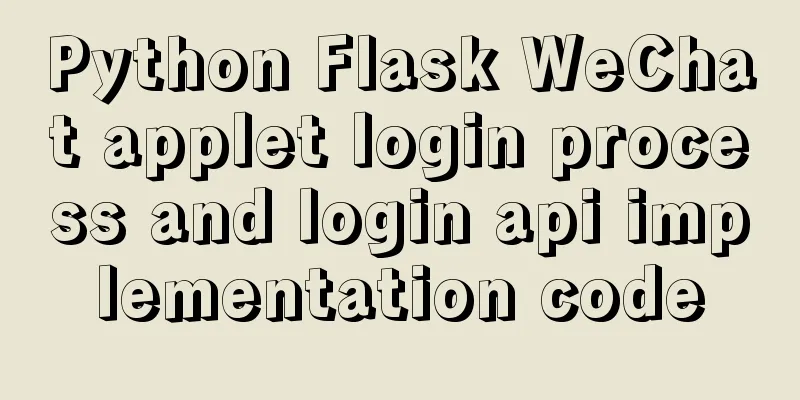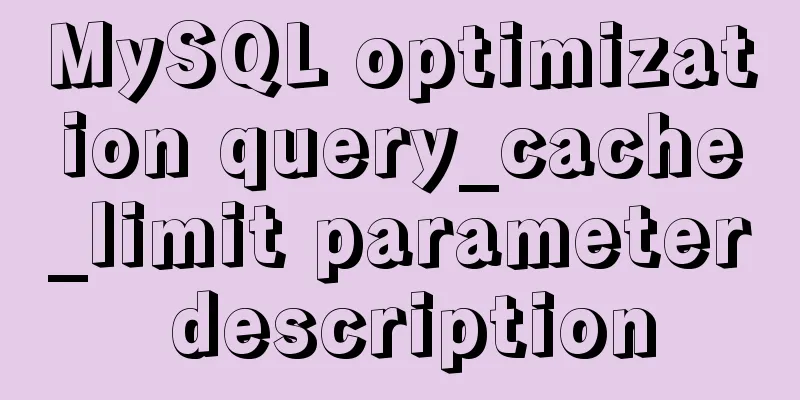Python Flask WeChat applet login process and login api implementation code

|
1. Let’s take a look at the effect first
Data returned by the interface request:
2. Official Login Flowchart
3. Mini Program Login Process: 1. The applet calls wx.login 2. Determine whether the user is authorized 3. Access wx.getUserInfo from the applet 4. Mini program js code:
wx.login({
success: resp => {
// Send res.code to the backend in exchange for openId, sessionKey, unionId
console.log(resp);
var that = this;
// Get user information wx.getSetting({
success: res => {
if (res.authSetting['scope.userInfo']) {
// Already authorized, you can directly call getUserInfo to get the avatar nickname without a pop-up window wx.getUserInfo({
success: userResult => {
var platUserInfoMap = {}
platUserInfoMap["encryptedData"] = userResult.encryptedData;
platUserInfoMap["iv"] = userResult.iv;
wx.request({
url: 'http://127.0.0.1:5000/user/wxlogin',
data: {
platCode: resp.code,
platUserInfoMap: platUserInfoMap,
},
header: {
"Content-Type": "application/json"
},
method: 'POST',
dataType:'json',
success: function (res) {
console.log(res)
wx.setStorageSync("userinfo", res.userinfo) //Set local cache },
fail: function (err) { }, // Request failed complete: function () { } // Function executed after request is completed })
}
})
}
}
})
}
}) 5. The backend server accesses code2session and obtains the login 6. The backend server verifies the user information and decrypts
{
"openId": "OPENID",
"nickName": "NICKNAME",
"gender": GENDER,
"city": "CITY",
"province": "PROVINCE",
"country": "COUNTRY",
"avatarUrl": "AVATARURL",
"unionId": "UNIONID",
"watermark":
{
"appid":"APPID",
"timestamp":TIMESTAMP
}
}7. Create a new decryption file - WXBizDataCrypt.py
import base64
import json
from Crypto.Cipher import AES
class WXBizDataCrypt:
def __init__(self, appId, sessionKey):
self.appId = appId
self.sessionKey = sessionKey
def decrypt(self, encryptedData, iv):
# base64 decode
sessionKey = base64.b64decode(self.sessionKey)
encryptedData = base64.b64decode(encryptedData)
iv = base64.b64decode(iv)
cipher = AES.new(sessionKey, AES.MODE_CBC, iv)
decrypted = json.loads(self._unpad(cipher.decrypt(encryptedData)))
if decrypted['watermark']['appid'] != self.appId:
raise Exception('Invalid Buffer')
return decrypted
def _unpad(self, s):
return s[:-ord(s[len(s)-1:])] 8. Flask's
import json,requests
from WXBizDataCrypt import WXBizDataCrypt
from flask import Flask
@app.route('/user/wxlogin', methods=['GET','POST'])
def user_wxlogin():
data = json.loads(request.get_data().decode('utf-8')) # Convert the front-end Json data to a dictionary appID = 'appID' # The developer's appID for the WeChat applet
appSecret = 'appSecret' # Developer's appSecret for WeChat Mini Program
code = data['platCode'] # WeChat temporary login credential code sent by the front end POST
encryptedData = data['platUserInfoMap']['encryptedData']
iv = data['platUserInfoMap']['iv']
req_params = {
'appid': appID,
'secret': appSecret,
'js_code': code,
'grant_type': 'authorization_code'
}
wx_login_api = 'https://api.weixin.qq.com/sns/jscode2session'
response_data = requests.get(wx_login_api, params=req_params) # Initiate a GET request to the API resData = response_data.json()
openid = resData ['openid'] # Get the user's OpenID for the current applet
session_key = resData ['session_key'] # Get the user's session key session_key for the current applet
pc = WXBizDataCrypt(appID, session_key) #Decrypt user information userinfo = pc.decrypt(encryptedData, iv) #Get user information print(userinfo)
'''
The following part determines whether to add or return a custom login state by judging whether the user exists in the database (if the user does not exist, add it; if the user exists, return the user information)
--------slightly slightly slightly slightly slightly slightly slightly slightly-------------
I will skip this part and operate on users in the database'''
return json.dumps
({
"code": 200, "msg": "Login successful", "userinfo": userinfo}, indent=4, sort_keys=True, default=str, ensure_ascii=False)Summarize This is the end of this article about Python Flask WeChat applet login details and login API implementation. For more related Python Flask WeChat applet login details and login API implementation content, please search 123WORDPRESS.COM’s previous articles or continue to browse the following related articles. I hope everyone will support 123WORDPRESS.COM in the future! You may also be interested in:
|
<<: Vue implements three-level navigation display and hiding
>>: mysql: [ERROR] unknown option '--skip-grant-tables'
Recommend
A brief analysis of the use of watchEffect in Vue3
Preface Everyone should be familiar with the watc...
Example of how to deploy a Django project using Docker
It is also very simple to deploy Django projects ...
Beginners learn some HTML tags (1)
Beginners can learn HTML by understanding some HT...
How to create a project with WeChat Mini Program using typescript
Create a project Create a project in WeChat Devel...
5 Commands to Use the Calculator in Linux Command Line
Hello everyone, I am Liang Xu. When using Linux, ...
Detailed tutorial for springcloud alibaba nacos linux configuration
First download the compressed package of nacos fr...
How to install Linux system (Redhat8) and virtual machine network configuration in VMware
Table of contents 1. Install vmware 1.1 Download ...
mysql 5.7.23 winx64 decompression version installation tutorial
Detailed installation tutorial of mysql-5.7.23-wi...
How to use resize to implement image switching preview function
Key Points The CSS resize property allows you to ...
Vue realizes the percentage bar effect
This article shares the specific code of Vue to r...
New ideas for time formatting in JavaScript toLocaleString()
Table of contents 1. Conventional ideas for time ...
Detailed explanation of the front-end framework for low-threshold development of iOS, Android, and mini-program applications
Nowadays, cross-platform development technology i...
js canvas realizes random particle effects
This article example shares the specific code of ...
10 minutes to thoroughly understand WeChat applet single page application routing
Single page application characteristics "Ass...
How to run the springboot project in docker
1. Click Terminal below in IDEA and enter mvn cle...












